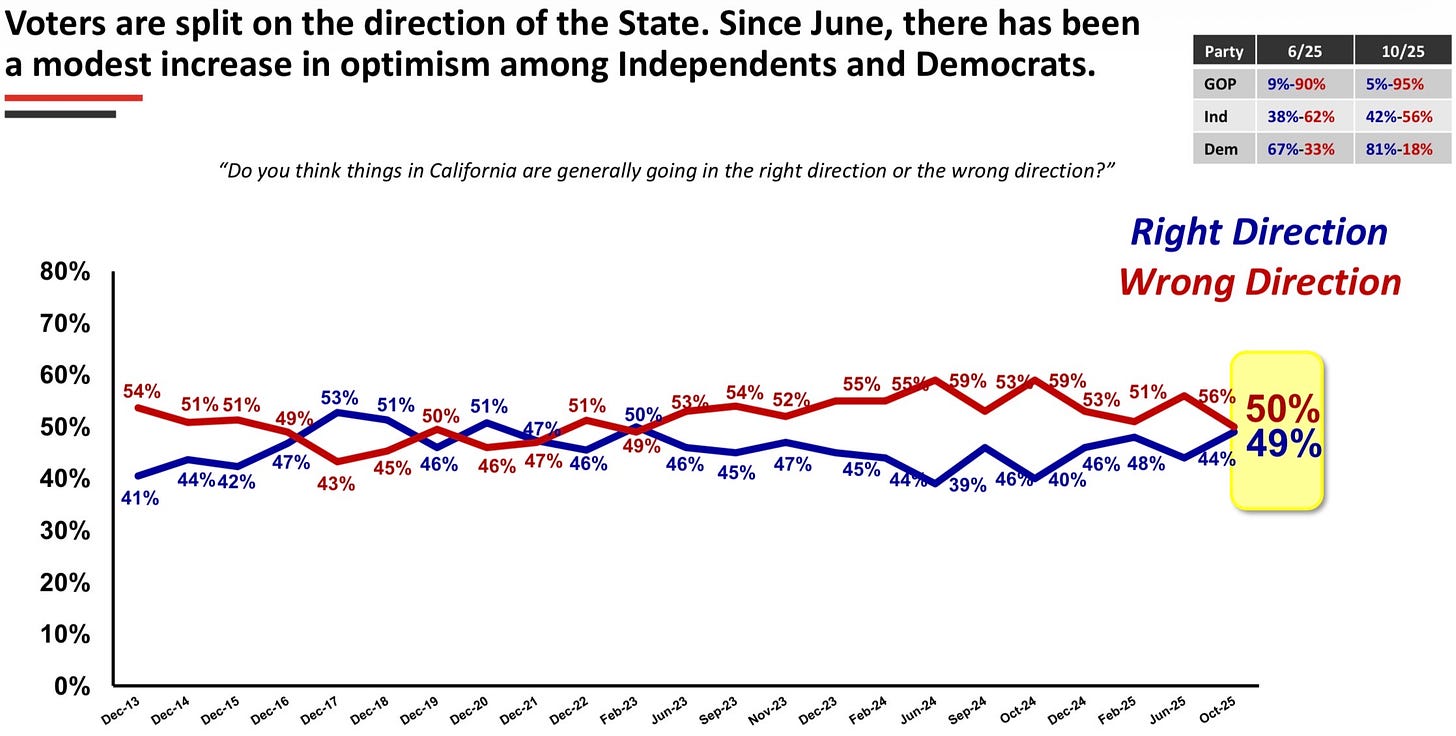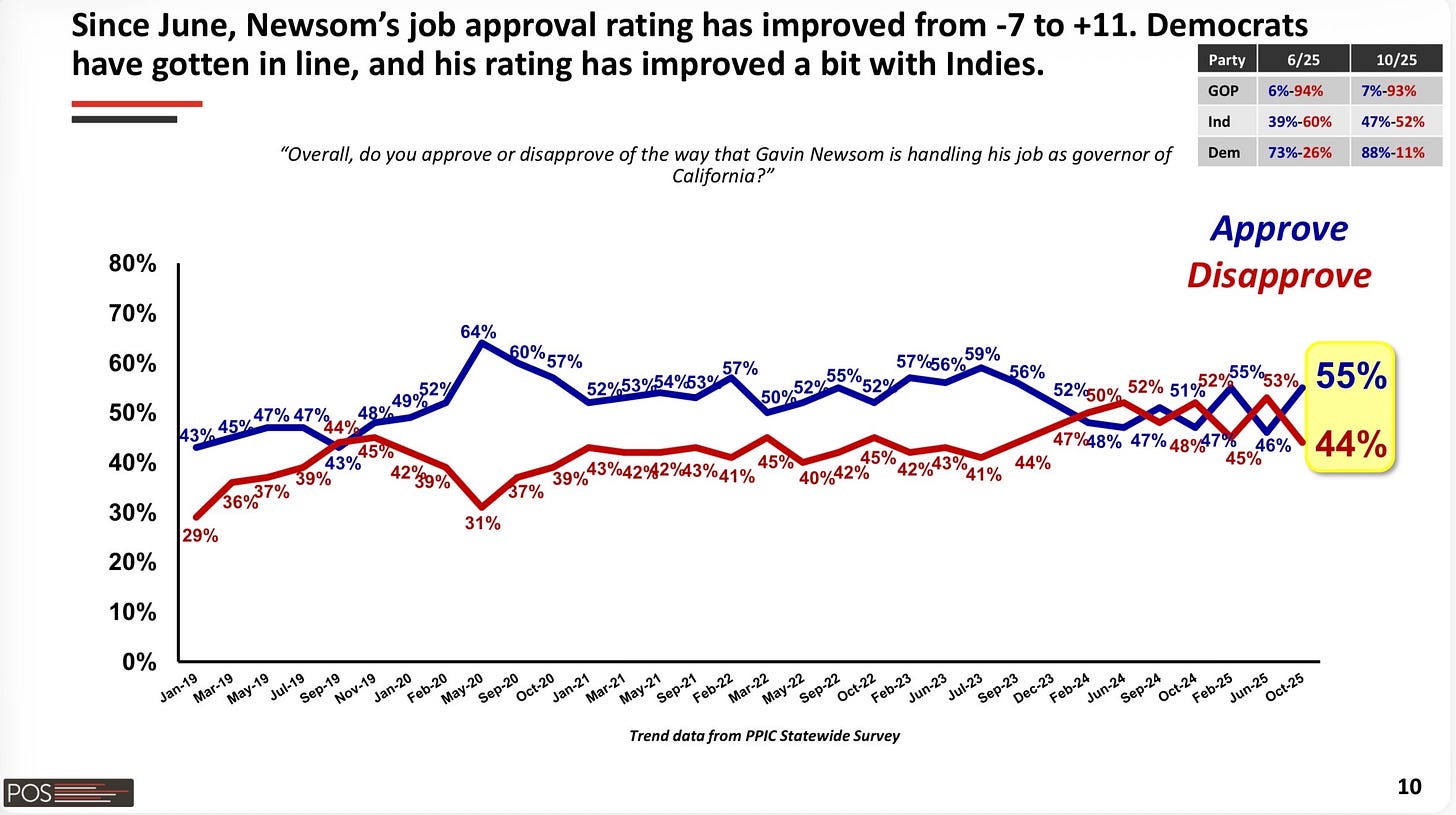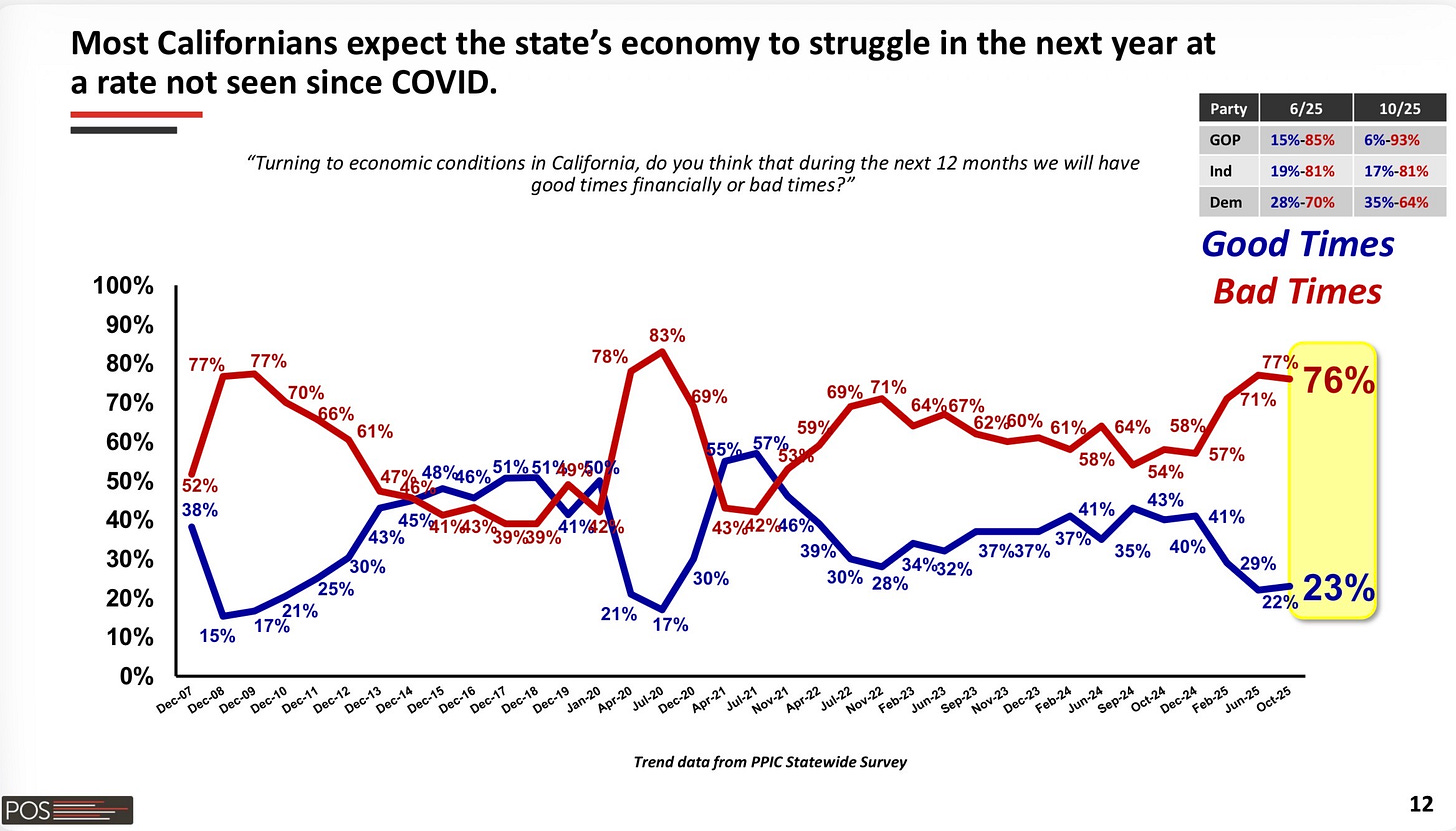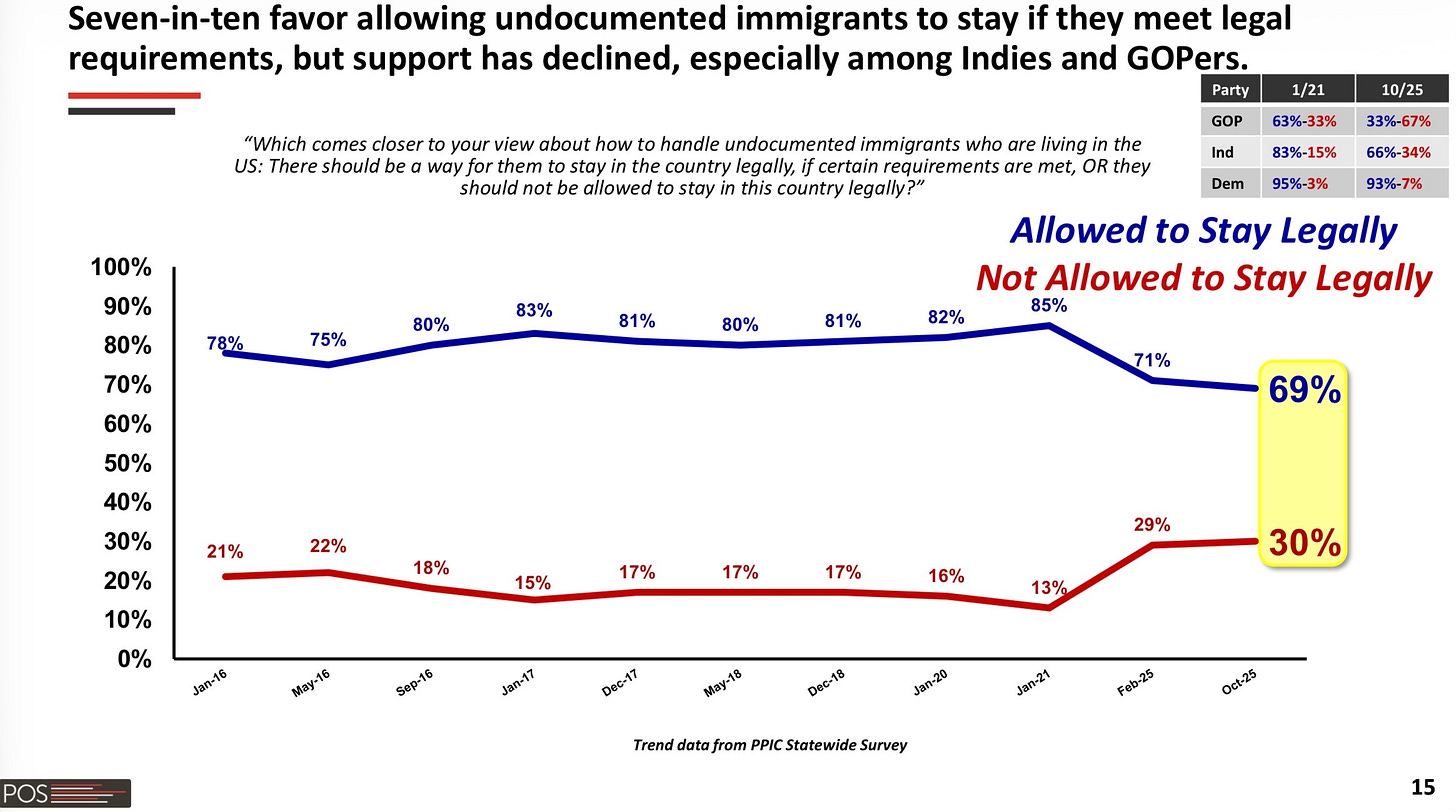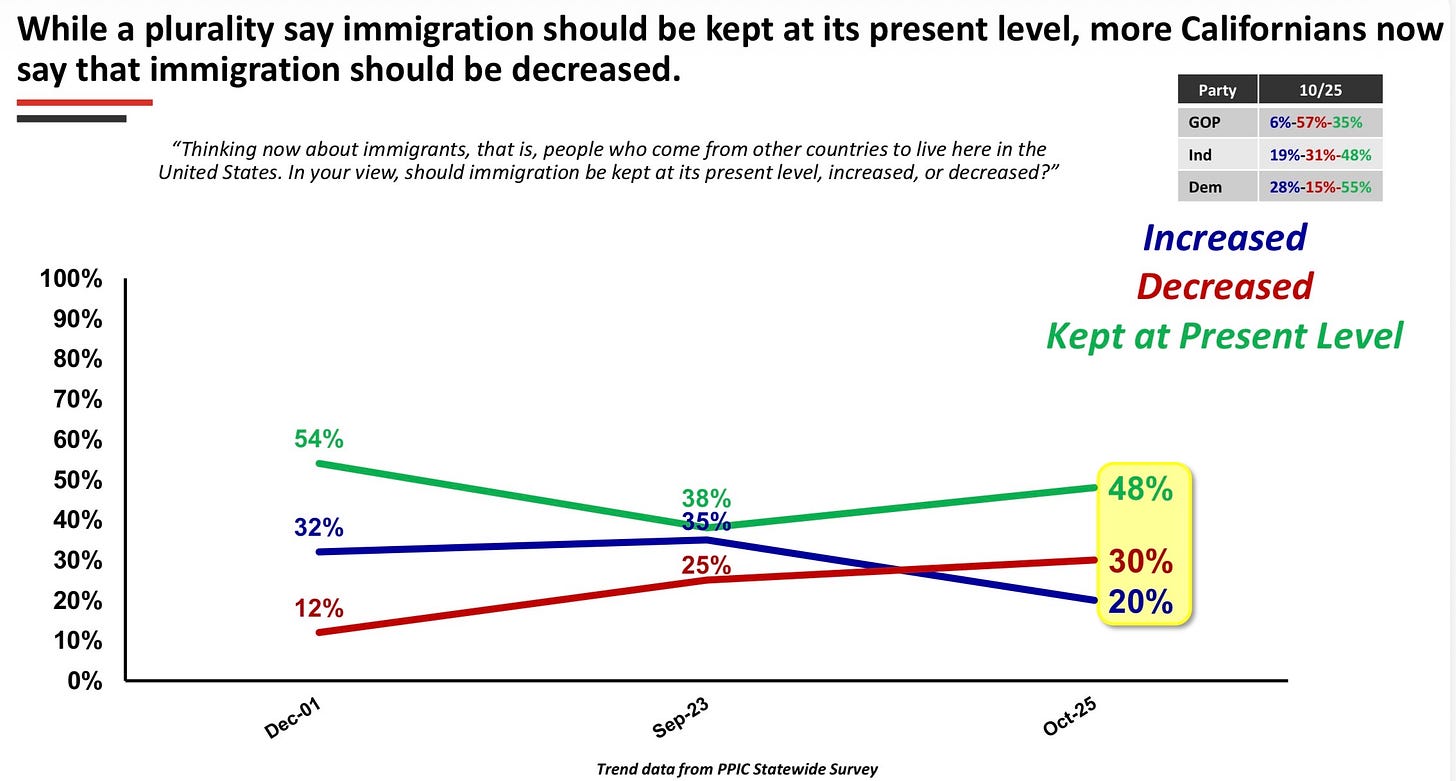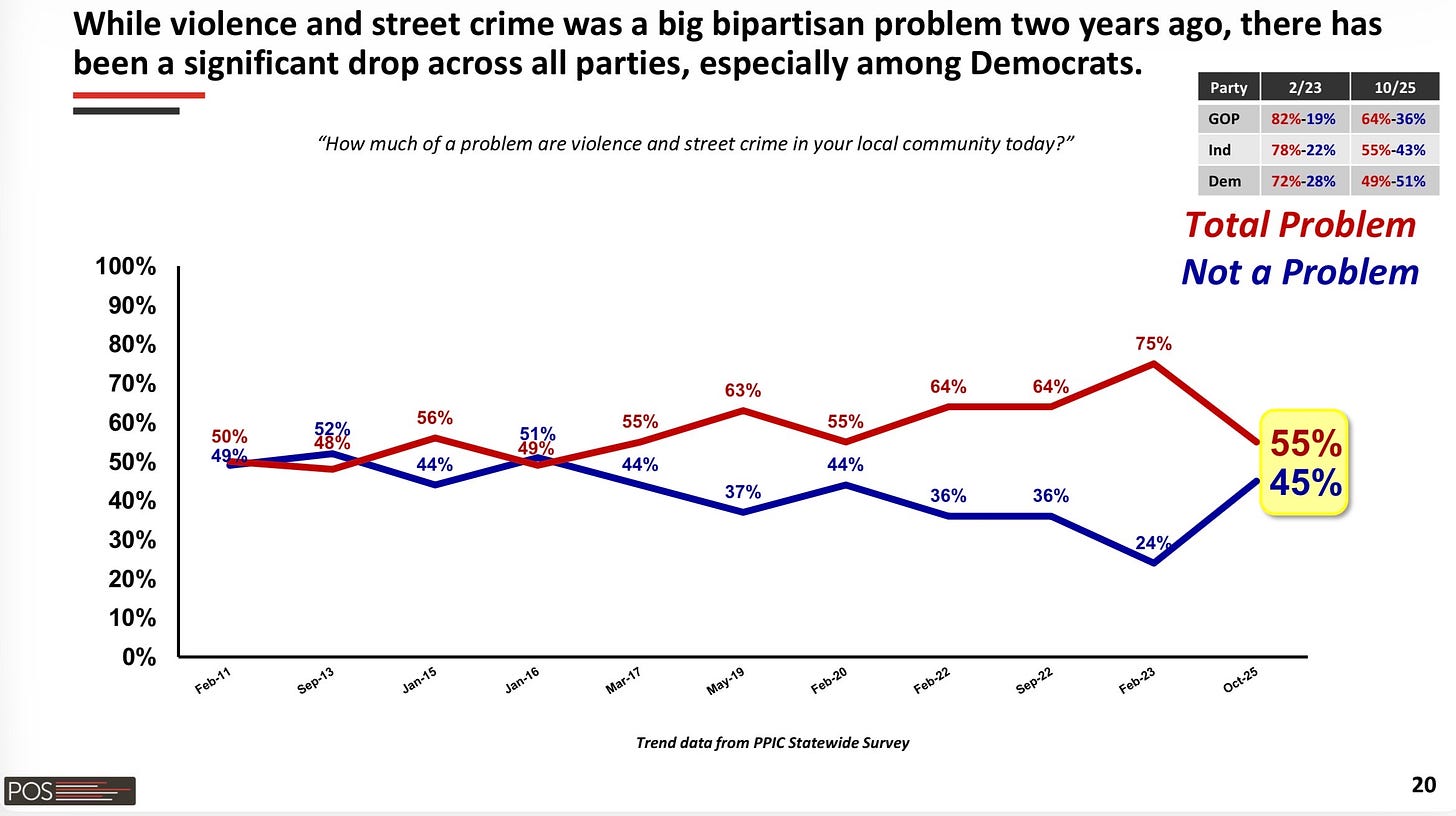California’s Mood Is Shifting — But Not the Way Sacramento Thinks
California voters are divided over where the state is headed, uneasy about the economy, and showing new doubts about immigration — data compiled by pollster George Nassar captures that uneasy mood.
[Our paid subscribers have bonus content below! FOMO? Upgrade today!]
California’s Mood Is Shifting — But Not the Way Sacramento Thinks
California voters are divided over where the state is headed, uneasy about the economy, and showing new doubts about immigration — data compiled by pollster George Nassar captures that uneasy mood as he analyses the the latest statewide public opinion survey from the Public Policy Institute of California.
Reading the Numbers — and the Mood
Every few months, the Public Policy Institute of California surveys how people feel about their leaders and the state’s direction. This time, veteran pollster George Nassar of Public Opinion Strategies compiled the results into a chart book that reveals a public that appears calmer in the numbers than it feels in daily life.
California is essentially split: 47% of adults say the state is headed in the “right direction,” while 51% say “wrong track.” Among likely voters, the divide flips — 49% say the direction is right and 50% say it’s the wrong track. Optimism is fragile and concentrated among Democrats; independents remain skeptical.
Newsom’s Rebound, Driven by His Base
Governor Gavin Newsom’s job approval has improved from –7 net in June to +11 net today, thanks mainly to Democrats closing ranks. Among his own party, approval jumped from +47 to +77. Independents ticked up slightly, while Republicans remain almost uniformly opposed.
It’s not so much a comeback as a show of partisan loyalty — Democrats circling wagons while Californians face rising costs and constant political showmanship.
California’s Optimism Rests on Shaky Ground
The modest lift in sentiment is being read as progress in Sacramento, but it’s mostly a partisan bounce. Among independents, barely four in ten think the state is on the right path.
Three-quarters (76%) of Californians expect financially bad times ahead — pessimism that cuts across the political spectrum: 93% of Republicans, 81% of independents, and 64% of Democrats. Those numbers echo the kitchen-table reality — insurance hikes, rent spikes, and grocery bills that never seem to come down. Those figures say more about the mood than any campaign speech could.
The Most Dramatic Movement: Immigration
The most significant shift in this survey is related to immigration. In 2021, 85% of likely voters said undocumented immigrants should have a path to legal status; today, that number has decreased to 69%. Opposition has more than doubled, from 13 to 30 percent.
Among Latino voters, opposition has increased by 13 points — from 6% to 19% — since 2021. That shift isn’t driven by hostility — it’s voters trying to balance compassion with a sense of order and cost.
For the first time in PPIC tracking, more Californians now prefer decreasing immigration (30%) than increasing it (20%). This is very interesting considering the high profile this divisive issues has had in California, especially.
Public Order: The Perception Gap Widens
Concerns about homelessness and crime have eased, though both remain top-tier issues. The share saying homelessness increased in the past year dropped from 73% (Feb 2023) to 48% now. The share saying violence and street crime increased fell from 48% to 30%.
But “less worried” doesn’t mean satisfied. Majorities still describe property crime and homelessness as serious problems. Californians may sense progress, but they expect visible results — not more speeches about compassion without accountability.
A Quiet Reshaping of the Voter Map
After years of decline, Republican voter registration is quietly rebounding. From 2022 through September 2025, the GOP has garnered 508,000 more registered voters than Democrats statewide.
That surge is even sharper in House districts, such as (pre-Prop. 50) CA-13, CA-45, and CA-27, where Republican registration gains outpace Democratic growth by five-figure margins. These electoral impact of these changes on House Districts will be muted with the assumed-passage of Prop. 50, of course. California politics tends to change slowly — right up until it changes fast.
So, Does It Matter?
Nassar’s October tracking deck shows a state trying to reconcile its confidence in ideals with frustration over outcomes. People still want a California that feels welcoming and secure, but they’re less convinced Sacramento’s way of governing can deliver it.
Voters aren’t turning conservative so much as pragmatic. They’re looking for results, affordability, and a sense of stability, rather than political theater.
It is worth mentioning that Governor Newsom’s strong upward move among liberal voters is not happening in a vacuum. His rebound coincides with a flood of anti-Trump messaging — both in his national positioning and in the Yes on Proposition 50 campaign, which has been framed almost entirely as a referendum against Trump. Given the nonstop ads and media coverage, it’s not surprising that left-leaning voters are closing ranks around him.
You can read the numbers as a slight recovery for incumbents — or as proof that California’s political class is drifting away from everyday reality. If state leaders mistake this rebound for renewed trust, they’re misreading the room.
BONUS FOR PAID SUBSCRIBERS:
Below the fold, you can see the runner-up cartoon for this post, which is great (tough call) and you can check out George Nassar’s full October 2025 chart deck, featuring a bunch more charts besides the ones I’ve tucked into this analysis — each offering a clearer look at what’s driving California’s shifting public mood. Not a paid subscriber? Try the free trial. Get this deck now. And open up all firewalls going forward!
Keep reading with a 7-day free trial
Subscribe to FlashReport Presents: So, Does It Matter? On CA Politics! to keep reading this post and get 7 days of free access to the full post archives.




